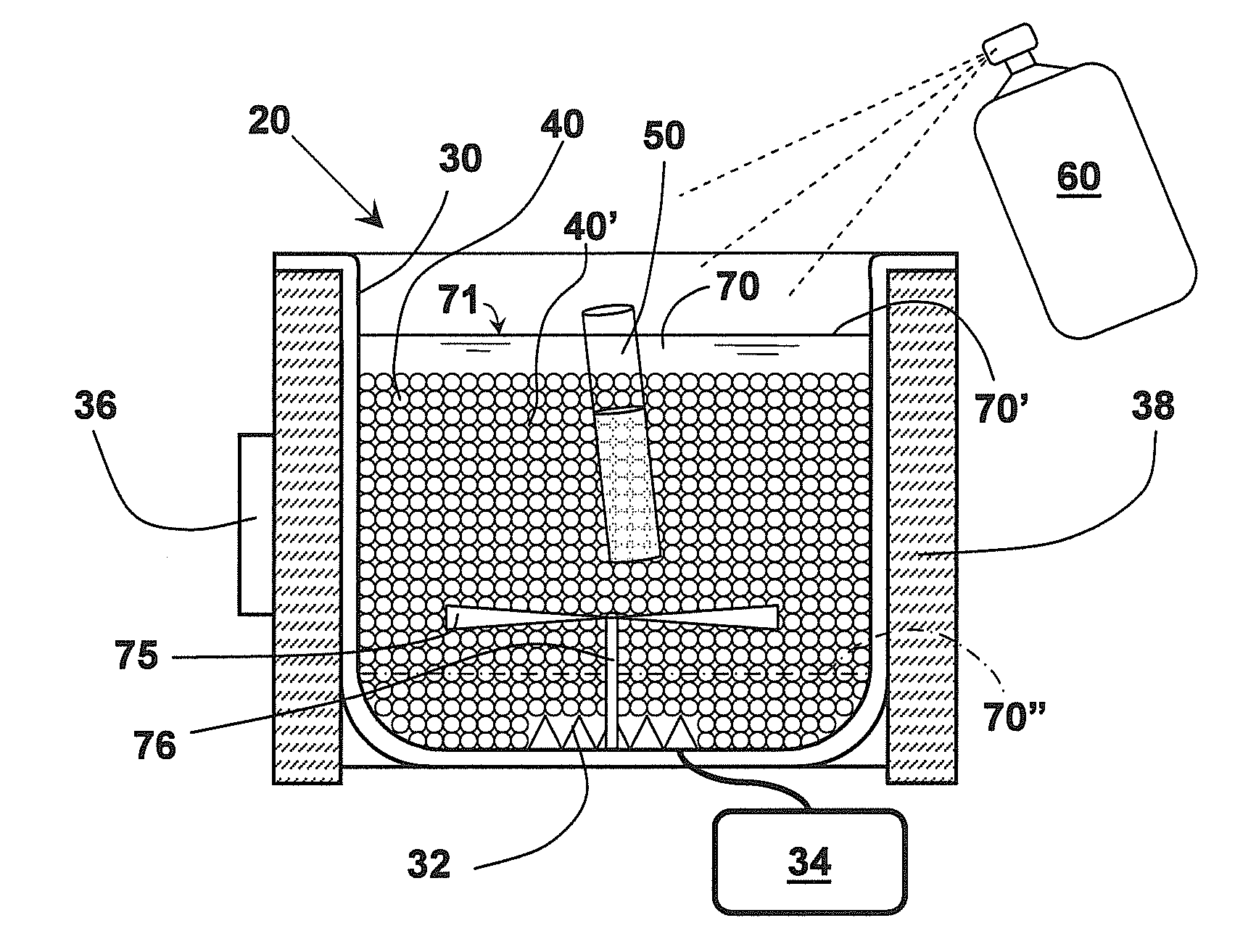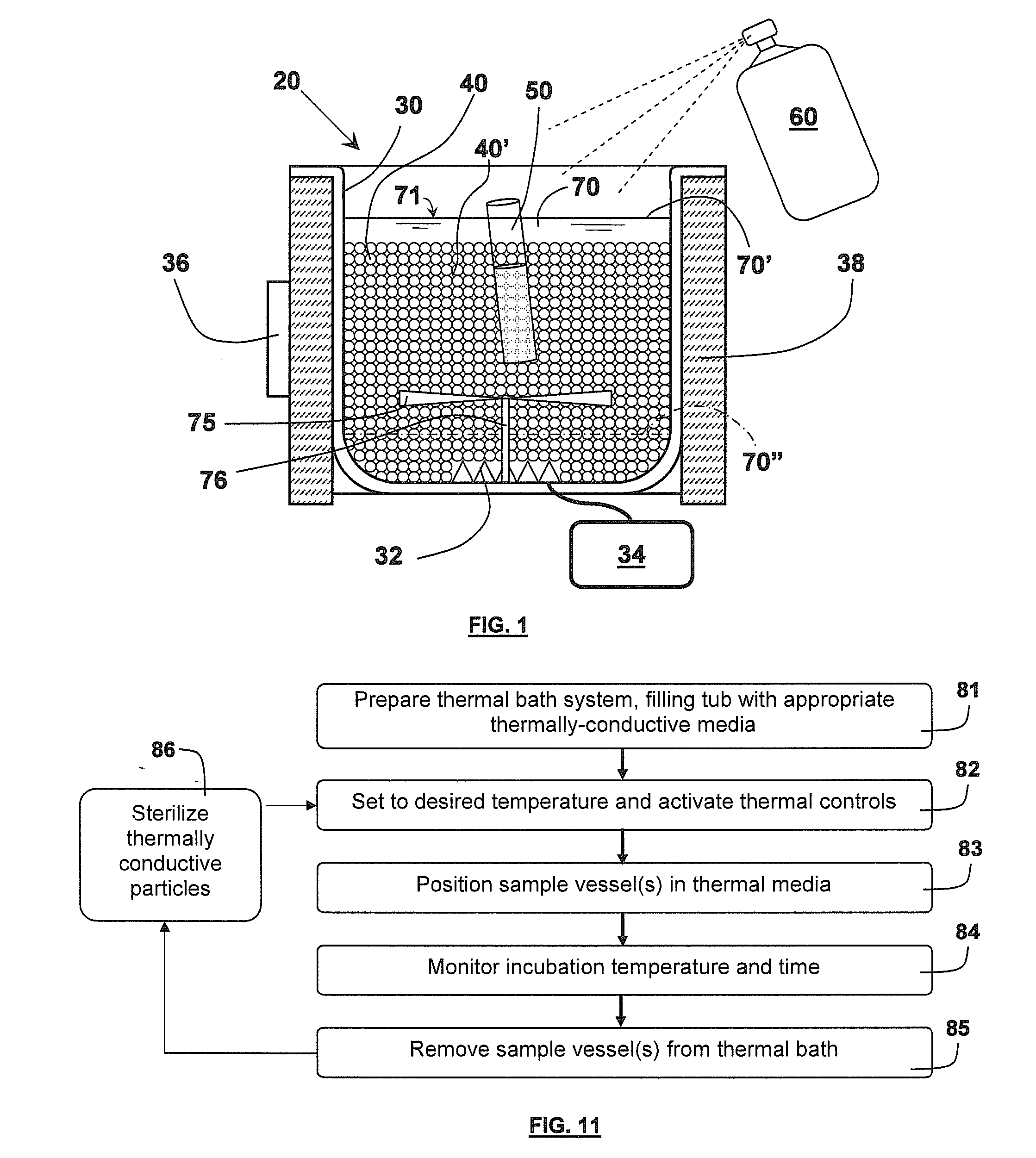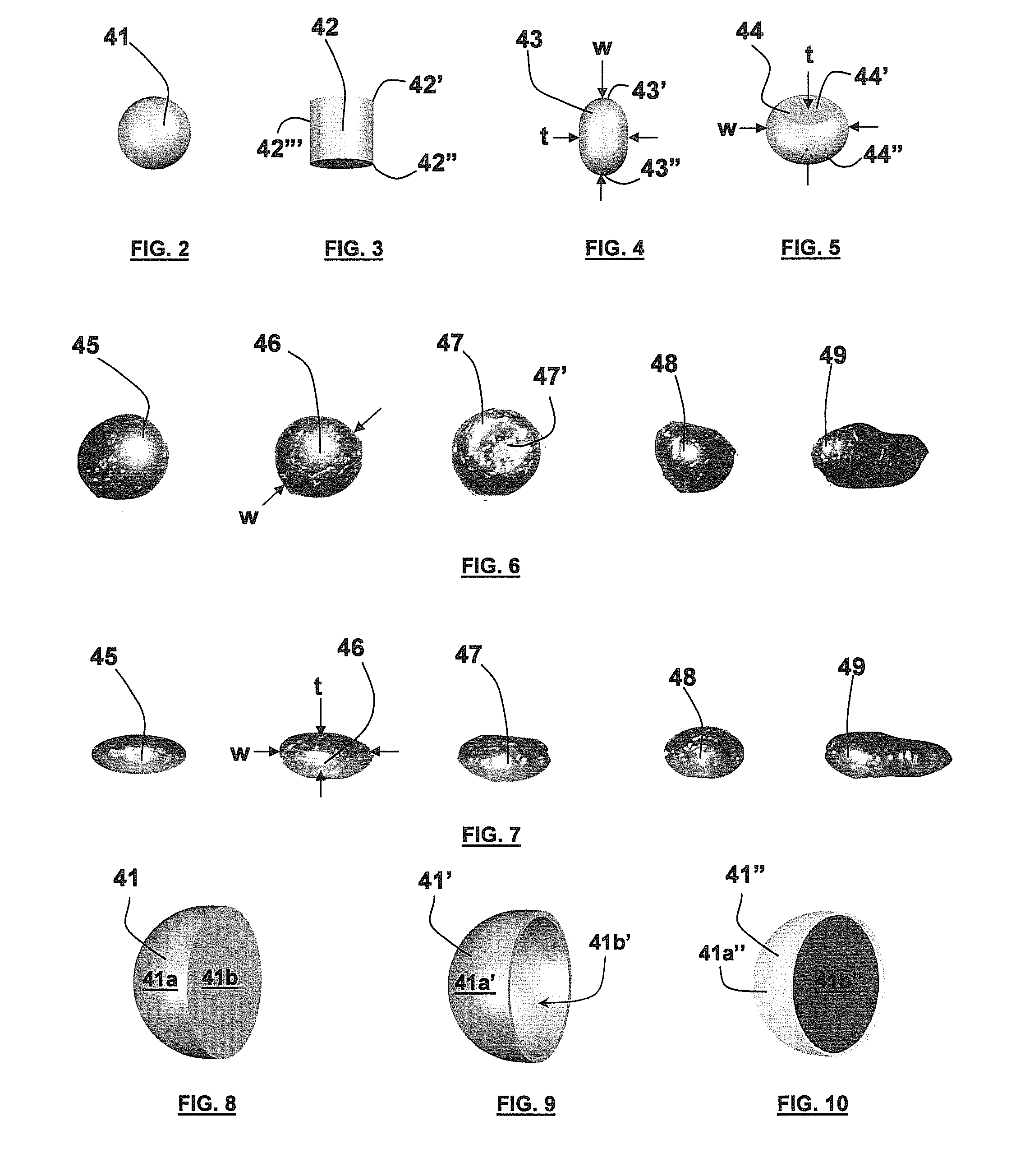Methods for Supporting a Vessel Within a Laboratory Bath
a technology for supporting vessels and laboratory baths, applied in the direction of lighting and heating apparatus, furniture, charge manipulation, etc., can solve the problems of water baths that present real problems, water runs the risk of introducing biological (microbial) contaminants as well as chemical contaminants, metals, salts, etc., to achieve optimal shape and size, maintain the effect of contamination control, and constant temperatur
- Summary
- Abstract
- Description
- Claims
- Application Information
AI Technical Summary
Benefits of technology
Problems solved by technology
Method used
Image
Examples
Embodiment Construction
[0032]Referring now to preferred embodiments in more detail, although FIG. 12 has some distinctions, FIGS. 1-11 show a thermal bath system as described in Applicant's co-pending provisional patent application 61 / 068,505, filed Mar. 7, 2008, titled “Thermal Bath Systems and Thermally-Conductive Particulate Thermal Bath Media and Methods.”
[0033]FIG. 1 shows a partially-cross-sectional schematic representation of a thermal bath system (20) according to the teachings of the present invention. On the basic level, thermal bath system (20) comprises many components similar to those of conventional laboratory thermal bath systems—namely a tub (30), a thermal source (32), power source (34), a temperature control unit (36), and thermal insulation (38). Conventional laboratory thermal baths such as water baths and dry blocks are well-established laboratory instruments for heating or cooling objects, vessels, or samples contained therein, and their uses have become standard practices in the lab...
PUM
 Login to View More
Login to View More Abstract
Description
Claims
Application Information
 Login to View More
Login to View More - R&D
- Intellectual Property
- Life Sciences
- Materials
- Tech Scout
- Unparalleled Data Quality
- Higher Quality Content
- 60% Fewer Hallucinations
Browse by: Latest US Patents, China's latest patents, Technical Efficacy Thesaurus, Application Domain, Technology Topic, Popular Technical Reports.
© 2025 PatSnap. All rights reserved.Legal|Privacy policy|Modern Slavery Act Transparency Statement|Sitemap|About US| Contact US: help@patsnap.com



